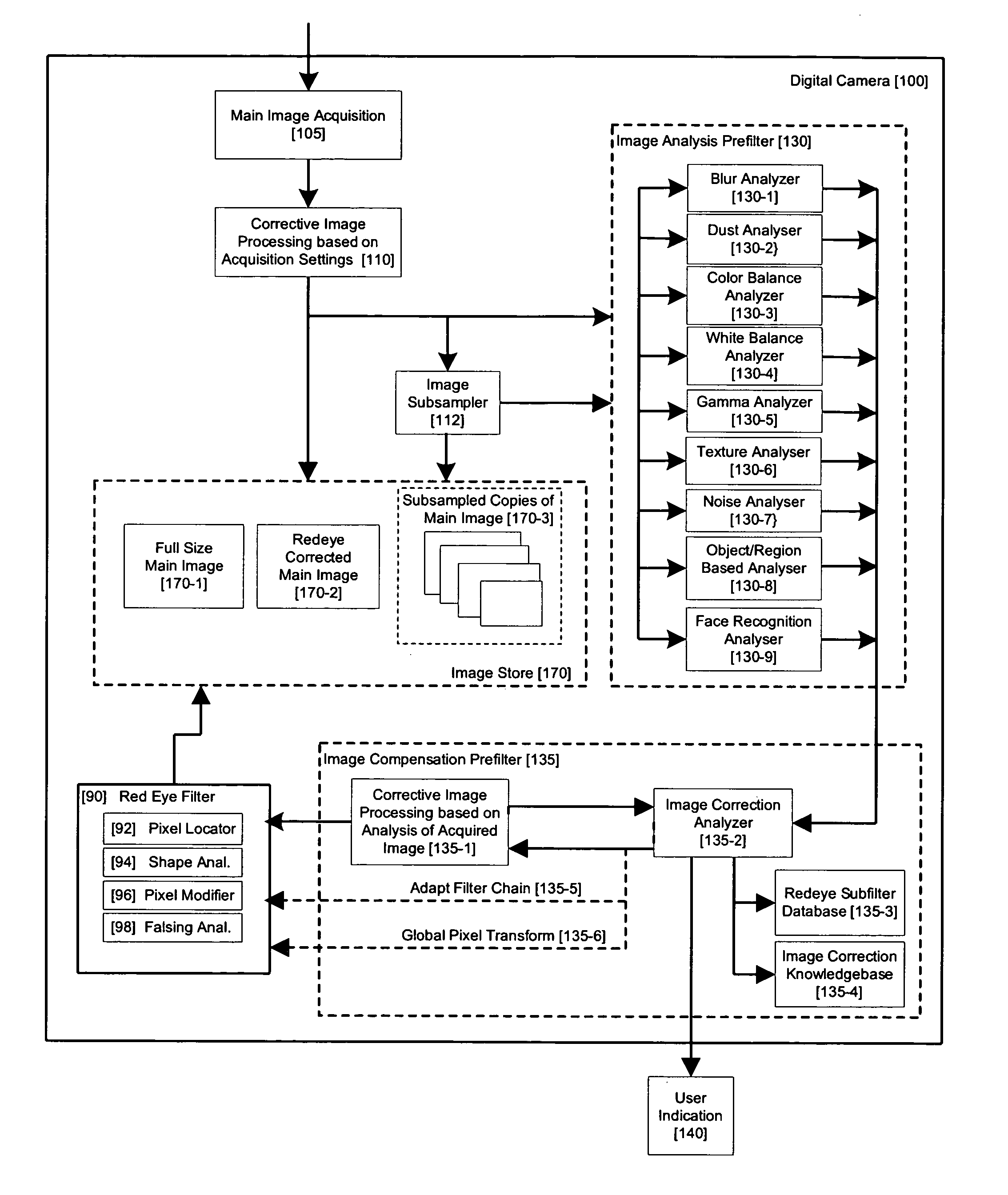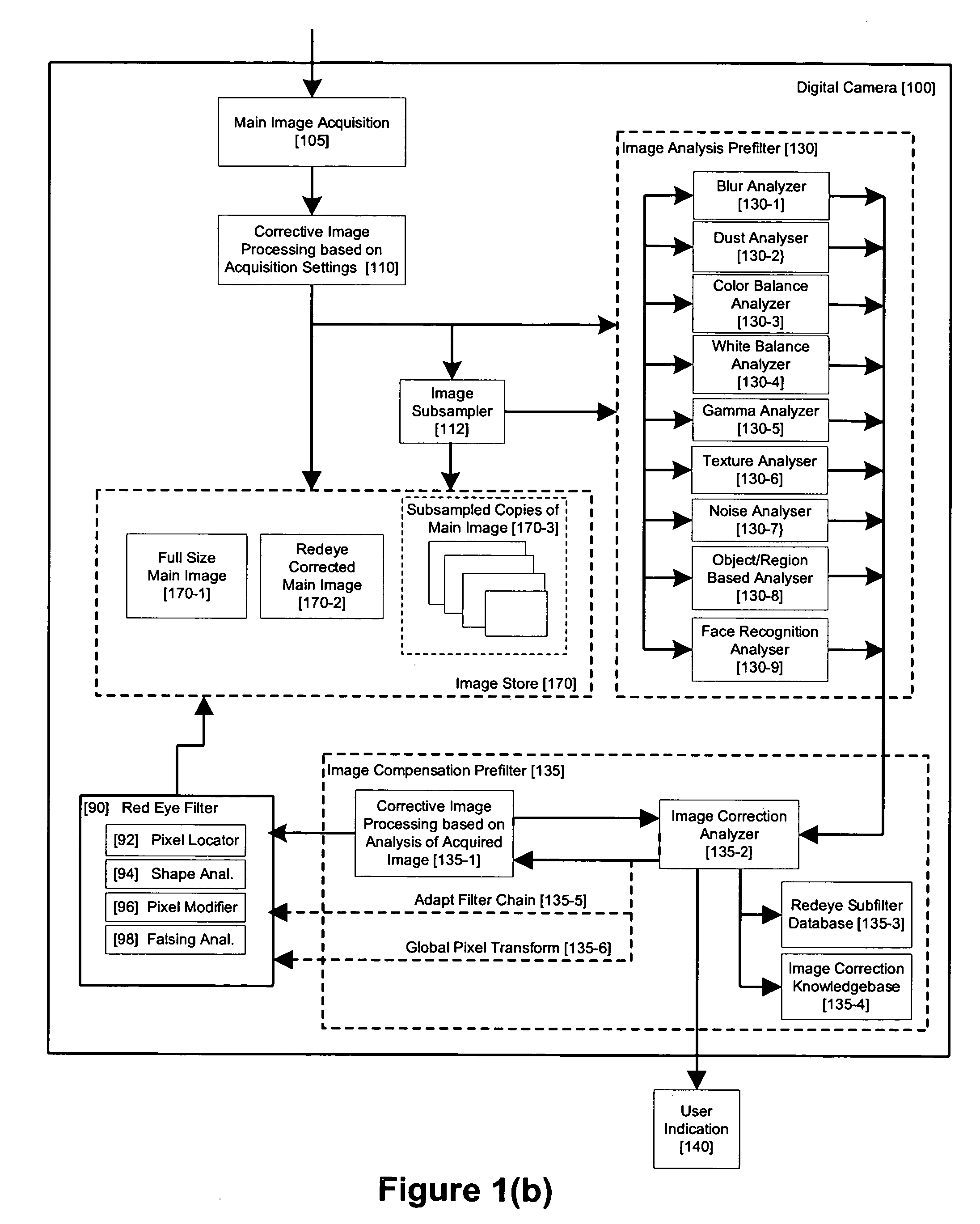Method and apparatus for red-eye detection in an acquired digital image using face recognition
a technology of face recognition and digital image, applied in the field of digital image processing, can solve the problems of deteriorating the overall detection of red eye defects and objectionable phenomena, and achieve the effects of reducing false positives, reducing color misclassification of pixels and regions belonging to non-defect areas, and reducing computing power requirements
- Summary
- Abstract
- Description
- Claims
- Application Information
AI Technical Summary
Benefits of technology
Problems solved by technology
Method used
Image
Examples
Embodiment Construction
[0037]FIG. 1 illustrates a prior art in-camera redeye system. Within the camera 100 a main image is acquired 105 from a sensor subsystem. This image is further processed 110 based on image acquisition parameters such as ambient lighting, length of exposure, usage of pre-flash and flash, lens focal length & aperture settings, etc. This image processing is pre-calibrated during the design of the camera and, due to the non-linear relationships between the various acquisition parameters, it typically involves a significant amount of empirical testing using as broad a range of image capture conditions as is practical. Thus, even though modern digital cameras have much improved auto-focus and auto-exposure algorithms it is still possible to capture images of non-optimal quality either through incorrect camera settings or through encountering conditions which are not fully accounted for by the empirical calibrations process for that camera.
[0038] After this image processing is completed t...
PUM
 Login to View More
Login to View More Abstract
Description
Claims
Application Information
 Login to View More
Login to View More - R&D
- Intellectual Property
- Life Sciences
- Materials
- Tech Scout
- Unparalleled Data Quality
- Higher Quality Content
- 60% Fewer Hallucinations
Browse by: Latest US Patents, China's latest patents, Technical Efficacy Thesaurus, Application Domain, Technology Topic, Popular Technical Reports.
© 2025 PatSnap. All rights reserved.Legal|Privacy policy|Modern Slavery Act Transparency Statement|Sitemap|About US| Contact US: help@patsnap.com



